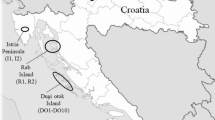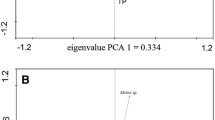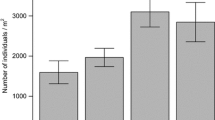Predation and food supply are generally perceived as important determinants of spatial and temporal variations of populations. The population dynamics of freshwater rotifers have been well researched in this aspect. However, their spatial variations have attracted less attention and have not been studied by simultaneously considering both predation and food supply. We studied spatial variations of rotifer abundance among 34 Canadian boreal lakes. A large part of the variance of rotifer abundance was associated with variables related to trophic status including chlorophyll a and total phosphorus. However, abundances of mesozooplankton such as potential predators and competitors did not correlate with rotifer abundance and did not explain the residual of the regression between rotifer abundance and chlorophyll a. The results of the present study indicated that variation in rotifer abundance among lakes was caused by ‘bottom-up’ forces related to food supply and not by ‘top-down’ predatory interactions. This provides a contrast to previous empiric and experimental studies that reported that temporal variations of rotifer abundance were mainly regulated by ‘top-down’ interactions. This discrepancy suggests that overall differences in rotifer abundance among lakes are mainly determined by ‘bottom-up’ forces while temporal changes in single lakes are shaped by ‘top-down’ forces. Meanwhile, the composition of rotifer species was correlated with mesozooplankton abundance as well as trophic status. Rotifer species with long spines or rigid loricae were found in the lakes where mesozooplankton were abundant, which suggests that defensive morphology could have affected the rotifer species distribution among the study lakes.
Similar content being viewed by others
References
Arndt H. (1993) Rotifers as predators on components of the microbial web (bacteria, heterotrophic flagellates, ciliates)-a review. Hydrobiologia 255/256: 231–246.
Bays J. S. & Crisman T. L. (1983) Zooplankton and trophic state relationships in Florida lakes. Canadian Journal of Fisheries and Aquatic Sciences 40: 1813–1819.
Behrendt H. & Krocker M. (1990) A method for the separation of zooplankton in high eutrophic water bodies. Limnologica 20: 79–81.
Bottrell H. H., Duncan A., Gliwicz Z. M., Grygierek E., Herzig A., Hillbright-Ilkowska A., Kurasawa H., Larsson P., Weglenska T. (1976) A review of some problems in zooplankton production studies. Norwegian Journal of Zoology 24: 419–456.
Bricker K. S., Bricker F. J., Gannon J. E. (1976) Distribution and abundance of zooplankton in the U.S. waters of Lake St. Clair, 1973. Journal of Great Lakes Research 2: 256–271.
Carlson R. E. (1977) A trophic state index for lakes. Limnology and Oceanography 22: 361–369.
Carpenter S. R., Kitchell J. F., Hodgson J. R., Cochran P. A., Elser J. J., Elser M. M., Lodge D. M., Kretchmer D., He X., Von Ende C. N. (1987) Regulation of lake primary productivity by food web structure. Ecology 68: 1863–1876.
Eaton K. A. (1983) The life history and production of Chaoborus punctipennis (Diptera: Chaoboridae) in Lake Norman, North Carolina, U.S.A. Hydrobiologia 106: 247–252.
Elser J. J., Chrzanowski T. H., Sterner R. W., Mills K. H. (1998) Stoichiometric constraints on food-web dynamics: a whole-lake experiment on the Canadian Shield. Ecosystems 1: 120–136.
Elser J. J., Hayakawa K., Urabe J. (2001) Nutrient limitation reduces food quality for zooplankton: Daphnia response to seston phosphorus enrichment. Ecology 82: 898–903.
Gasol J. M., Simons A. M., Kalff J. (1995) Pattern in the top-down versus bottom-up regulation of heterotrophic nanoflagellates in temperate lakes. Journal of Plankton Research 17: 1879–1903.
Gilbert J. J. (1988a) Suppression of rotifer populations by Daphnia: a review of the evidence, the mechanisms, and the effects on zooplankton community structure. Limnology and Oceanography 33: 1286–1303.
Gilbert J. J. (1988b) Susceptibilities of ten rotifer species to interference from Daphnia pulex. Ecology 69: 1826–1838.
Gliwicz Z. M. & Pijanowska J. (1989) The role of predation in zooplankton succession. In: Plankton Ecology: Succession in Plankton Communities (ed. U. Sommer), pp. 253–296. Springer-Verlag, Berlin.
Hall D. J., Threlkeld S. T., Burns C. W., Crowley P. H. (1976) The size-efficiency hypothesis and the size structure of zooplankton communities. Annual Review of Ecology and Systematics 7: 177–208.
Hassett R. P., Cardinale B., Stabler L. B., Elser J. J. (1997) Ecological stoichiometry of N and P in pelagic ecosystems: Comparison of lakes and oceans with emphasis on the zooplankton–phytoplankton interaction. Limnology and Oceanography 41: 648–662.
Healey F. P. & Hendzel L. L. (1980) Physiological indicators of nutrient deficiency in lake phytoplankton. Canadian Journal of Fisheries and Aquatic Sciences 37: 442–453.
Hecky R. E., Campbell P., Hendzel L. L. (1993) The stoichiometry of carbon, nitrogen, and phosphorus in particulate matter of lakes and oceans. Limnology and Oceanography 38: 709–724.
Hobbie J. E., Daley R. J., Jasper S. (1977) Use of Nuclepore filters for counting bacteria by fluorescence microscopy. Applied and Environmental Microbiology 33: 1225–1228.
Hunter M. D. & Price P. W. (1992) Playing chutes and ladders: heterogeneity and the relative roles of bottom-up and top-down forces in natural communities. Ecology 73: 724–732.
Lawrence S. G., Malley D. F., Findlay W. J., MacIver M. A., Delbaere I. L. (1987) Method for estimating dry weight of freshwater planktonic crustaceans from measures of length and shape. Canadian Journal of Fisheries and Aquatic Sciences 44: 264–274.
Ooms-Wilms A. L. (1997) Are bacteria an important food source for rotifers in eutrophic lakes?Journal of Plankton Research 19: 1125–1141.
Pace M. L. (1984) Zooplankton community structure, but not biomass, influences the phosphorus-chlorophyll a relationship. Canadian Journal of Fisheries and Aquatic Sciences 41: 1089–1096.
Pace M. L. (1986) An empirical analysis of zooplankton community size structure across lake trophic gradients. Limnology and Oceanography 31: 45–55.
Pace M. L., Cole J. J., Carpenter S. R. (1998) Trophic cascades and compensation: differential responses of microzooplankton in whole-lake experiments. Ecology 79: 138–152.
Pace M. L., Cole J. J., Carpenter S. R., Kitchell J. F. (1999) Trophic cascades revealed in diverse ecosystems. Trends in Ecology and Evolution 14: 483–488.
Pourriot R. (1977) Food and feeding habits of Rotifera. Archiv für Hydrobiologie Beihefte 8: 243–260.
Power M. E. (1990) Resource enhancement by indirect effects of grazers: armored catfish, algae, and sediment. Ecology 71: 897–904.
Ruttner-Kolisko A. (1974) Plankton Rotifers Biology and Taxonomy. E. Schweizerbart’scheVerlagsbuchhandlung, Stuttgart.
Ruttner-Kolisko A. (1977) Suggestions for biomass calculations of planktonic rotifers. Archiv für Hydrobiologie Beihefte 21: 71–76.
Sakamoto M. (1966) Primary production by phytoplankton community in some Japanese lakes and its dependence on lake depth. Archiv für Hydrobiologie 62: 1–28.
Schindler D. W. & Novén B. (1971) Vertical distribution and seasonal abundance of zooplankton in two shallow lakes of the Experimental Lakes Area, northwestern Ontario. Journal of Fisheries Research Board of Canada 28: 245–256.
Sherr B. F. & Sherr E. B. (1983) Enumeration of heterotrophic microprotozoa by epifluorescence microscopy. Estuarine Coastal Shelf Science 16: 1–7.
Sommer U., ed. (1989) Plankton Ecology: Succession in Plankton Communities. Springer-Verlag, Berlin.
Sommer U., Gliwicz Z. M., Lampert W., Duncan A. (1986) The PEG-model of seasonal succession of planktonic events in fresh waters. Archiv für Hydrobiologie 106: 433–471.
Stainton M. P., Capel M. J., Armstrong F. A. J. (1977) The Chemical Analysis of Fresh Water, 2nd edn. Canadian Fisheries and Marine Service Miscellaneous. Special Publication 25. The Department of Fisheries and Oceans, Ottawa.
Stemberger R. S. (1979) A Guide to Rotifers of the Laurentian Great Lakes. EPA-600/4–79–021, U.S. Environmental Protection Agency, Cincinnati.
Stemberger R. S. & Evans M. S. (1984) Rotifer seasonal succession and copepod predation in Lake Michigan. Journal of Great Lakes Research 10: 417–428.
Stemberger R. S. & Gilbert J. J. (1984) Spine development in the rotifer Keratella cochlearis: induction by cyclopoid copepods and Asplanchna. Freshwater Biology 14: 639–647.
Stemberger R. S. & Gilbert J. J. (1985) Body size, food concentration, and population growth in planktonic rotifers. Ecology 66: 1151–1159.
Sterner R. W. (1989) The role of grazers in phytoplankton succession. In: Plankton Ecology: Succession in Plankton Communities (ed. U. Sommer), pp. 107–170. Springer-Verlag, Berlin.
Sterner R. W. (1998) Demography of a natural population of Daphnia retrocurva in a lake with low food quality. Journal Plankton Research 20: 471–489.
Ter Braak C. J. F. (1986) Canonical correspondence analysis: a new eigenvector technique for multivariate direct gradient analysis. Ecology 67: 1167–1179.
Ter Braak C. J. F. & Smilauer P. (1998) canoco reference manual and user’s guide to Canoco for Windows:Software for Canonical Community Ordination Version 4.Microcomputer Power, Ithaca.
Us EpA (1974) Water Quality Management Planning for Urban Runoff. U.S. Environmental Protection Agency, Washington DC.
Vollenweider R. A. (1968) The scientific basis of lake and stream pollution with particular references to phosphorus and nitrogen as eutrophic factors. Technical Report. OECD, Paris.
Walz N. (1995) Rotifer populations in plankton communities: energetics and life history strategies. Experientia 51: 437–453.
Walz N., Elster H.-J., Mezger M. (1987) The development of the rotifer community structure in Lake Constance during its eutrophication. Archiv für Hydrobiologie supplement 74: 452–487.
Williamson C. E. (1983) Invertebrate predation on planktonic rotifers. Hydrobiologia 104: 385–396.
Williamson C. E. (1987) Predator–prey interactions between omnivorous diaptomid copepods and rotifers: The role of prey morphology and behavior. Limnology and Oceanography 32: 167–177.
Williamson C. E. & Butler N. M. (1986) Predation on rotifers by the suspension-feeding calanoid copepod Diaptomus pallidus. Limnology and Oceanography 31: 393–402.
Williamson C. E. & Gilbert J. J. (1980) Variation among zooplankton predators: the potential of Asplanchna, Mesocyclops, and Cyclops to attack, capture, and eat various rotifer prey. In: Evolution and Ecology of Zooplankton Communities (ed. W. C. Kerfoot), pp. 509–517. University of New England Press, Hanover.
Yoshida T., Ban S., Takenouchi T., Aono T., Ishikawa Y., Mikami H., Takano K., Yasutomi R., Takeushi K. (2000) Top down control of population dynamics of the dominant rotifers in two mesotrophic lakes in Hokkaido Japan. Archiv für Hydrobiologie 148: 481–498.
Author information
Authors and Affiliations
Corresponding author
About this article
Cite this article
Yoshida, T., Urabe, J. & Elser, J. Assessment of ‘top-down’ and ‘bottom-up’ forces as determinants of rotifer distribution among lakes in Ontario, Canada. Ecol Res 18, 639–650 (2003). https://doi.org/10.1111/j.1440-1703.2003.00596.x
Received:
Accepted:
Issue Date:
DOI: https://doi.org/10.1111/j.1440-1703.2003.00596.x




